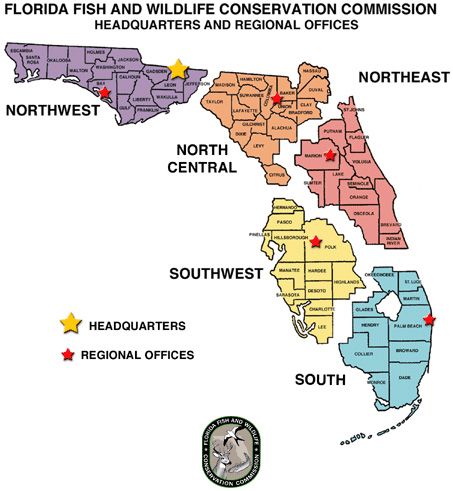Preface
This handbook is designed to provide an accurate, current, and authoritative summary of the principal federal and state (Florida) laws that directly or indirectly relate to agriculture. This handbook provides a basic overview of the many rights and responsibilities that farmers and farmland owners have under both federal and state laws as well as the appropriate contact information to obtain more detailed information. However, the reader should be aware that because the laws, administrative rulings, and court decisions on which this handbook is based are subject to constant revision, portions of this publication could become outdated at any time. Several details of cited laws are also left out due to space limitations. This handbook is provided as an educational text for those interested in water use and water resource issues in Florida.
This handbook is distributed with the understanding that the authors are not engaged in rendering legal or other professional advice, and the information contained herein should not be regarded as a substitute for professional advice. This handbook is not all inclusive in providing information to achieve compliance with the federal and state laws and regulations governing water protection. For these reasons, the use of these materials by any person constitutes an agreement to hold harmless the authors, the UF/IFAS Center for Agricultural and Natural Resource Law, and UF/IFAS Extension for any liability claims, damages, or expenses that may be incurred by any person as a result of reference to or reliance on the information contained in this handbook. Note: UF/IFAS is the acronym for University of Florida, Institute of Food and Agricultural Sciences.
FFWCC Overview
The purpose of the Florida Fish and Wildlife Conservation Commission (FFWCC) is the management, protection, and conservation of wild animal life, fresh water aquatic life, and marine life. FFWCC came into existence on July 1, 1999, with the approval of a constitutional amendment in the 1998 General Election (Article XII, Section 23, Florida Constitution). Under Article XII, Section 23, the state legislature combined the Marine Fisheries Commission, the Game and Fresh Water Fish Commission, and elements of the Divisions of Marine Resources and Law Enforcement of the Florida Department of Environmental Protection (FDEP) to form the FFWCC. Agency activities include:
- Regulation of the hunting and fishing of Florida's wildlife through the issuance and enforcement of hunting and saltwater and freshwater fishing licenses and various permits
- Enforcement of boating regulations
- Update of lists of threatened and endangered freshwater aquatic and land species
- Regulation of the possession and exploitation of captive wildlife through permitting and licensing various activities, including alligator farms, freshwater fish farms, dealers and buyers of fish or frogs, and the sale and purchase of animal furs and hides
- Inspection of construction and development projects
- Development of public recreational areas
- Habitat improvement Research and conservation information services
Note: Research and data collection includes the monitoring of nuisance, harmful, and toxic algal blooms (including those referred to as “red tides”). This information can be used to close or keep open shellfish harvesting areas and for other decisions.
FFWCC and FDEP Coordination of Activities
Although the FFWCC has jurisdiction over any fresh running waters of the state, FDEP is the agency primarily responsible for enforcement of water regulations in the state. As a result, jurisdictional directives in this area are overlapping because many agencies have the authority to address this concern.
For example, the FDEP maintains a list of Florida endangered marine species and the United States Department of Interior maintains a national list (see FE592, Endangered Species Act). The Endangered Species Act makes the killing, harassment, or destruction of these animals or their nests or eggs illegal. The FFWCC coordinates with the FDEP on updating lists of threatened and endangered freshwater aquatic and land species.
FFWCC Administrative Structure
The FFWCC’s board of commissioners is appointed by the governor and confirmed by the state senate to staggered terms of five years. Staggered term refers to the election schedule. Commissioners (currently, seven) are elected at different times to ensure the continuity of the board's operation. The executive director, who serves at the pleasure of the board of commissioners, is generally responsible for the operation of FFWCC, including the implementation of policies and rules made by the board of commissioners.
FFWCC is divided into six agency divisions: Fish and Wildlife Research Institute, Freshwater Fisheries Management, Habitat and Species Conservation, Hunting and Game Management, Law Enforcement, and Marine Fisheries Management.
The FFWCC is also divided into five regional offices: Northwest, North Central, Northeast, Southwest, and South (Figure 1).

Credit: FFWCC
For additional information about FFWCC, see the FFWCC website (https://myfwc.com/).
Sources
Chapter 379, Florida Statutes, Sections 379.101 to 379.237
Acknowledgments
The authors are indebted to the personnel of both state and federal agencies who provided their time and advice in the preparation of this handbook. We acknowledge Carol Fountain and Susan Gildersleeve at the University of Florida for their assistance in editing this handbook. We also acknowledge funding received for updating this publication from the James S. and Dorothy F. Wershow Agricultural Law Endowment.